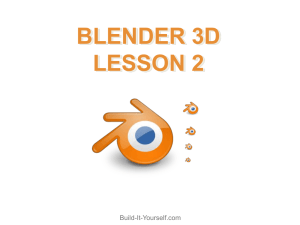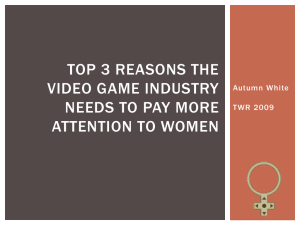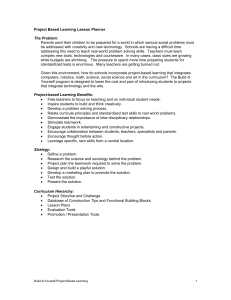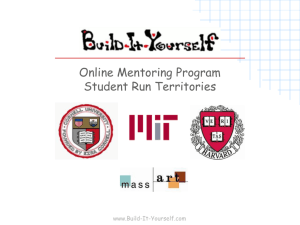game-dev-proposal - Build-It
advertisement
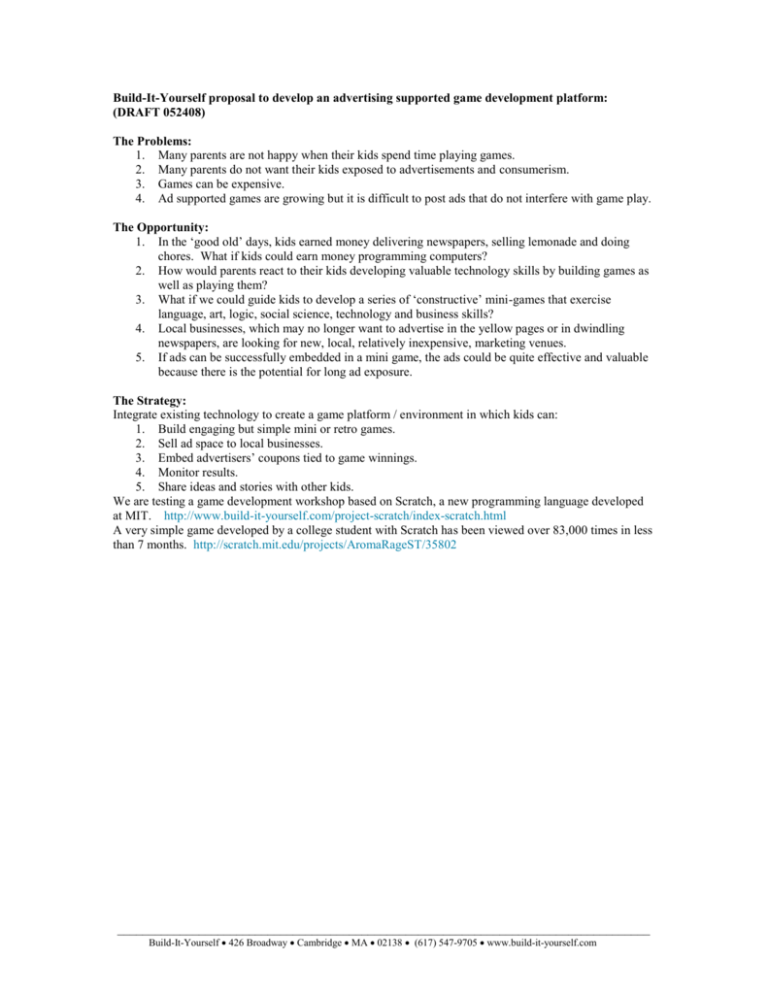
Build-It-Yourself proposal to develop an advertising supported game development platform: (DRAFT 052408) The Problems: 1. Many parents are not happy when their kids spend time playing games. 2. Many parents do not want their kids exposed to advertisements and consumerism. 3. Games can be expensive. 4. Ad supported games are growing but it is difficult to post ads that do not interfere with game play. The Opportunity: 1. In the ‘good old’ days, kids earned money delivering newspapers, selling lemonade and doing chores. What if kids could earn money programming computers? 2. How would parents react to their kids developing valuable technology skills by building games as well as playing them? 3. What if we could guide kids to develop a series of ‘constructive’ mini-games that exercise language, art, logic, social science, technology and business skills? 4. Local businesses, which may no longer want to advertise in the yellow pages or in dwindling newspapers, are looking for new, local, relatively inexpensive, marketing venues. 5. If ads can be successfully embedded in a mini game, the ads could be quite effective and valuable because there is the potential for long ad exposure. The Strategy: Integrate existing technology to create a game platform / environment in which kids can: 1. Build engaging but simple mini or retro games. 2. Sell ad space to local businesses. 3. Embed advertisers’ coupons tied to game winnings. 4. Monitor results. 5. Share ideas and stories with other kids. We are testing a game development workshop based on Scratch, a new programming language developed at MIT. http://www.build-it-yourself.com/project-scratch/index-scratch.html A very simple game developed by a college student with Scratch has been viewed over 83,000 times in less than 7 months. http://scratch.mit.edu/projects/AromaRageST/35802 _____________________________________________________________________________________ Build-It-Yourself 426 Broadway Cambridge MA 02138 (617) 547-9705 www.build-it-yourself.com _____________________________________________________________________________________ Build-It-Yourself 426 Broadway Cambridge MA 02138 (617) 547-9705 www.build-it-yourself.com Research: The value of computer games is discussed in a Harvard Press book, “Got Game.” Data collected supports the following conclusions: 1. Gamers are better at handling risk and uncertainty, and believe taking measured risks is the best way to get ahead. 2. Gamers are more creative and have better problem solving habits. 3. Gamers are more sociable and have a greater need for human relationships. 4. Gamers think of themselves as experts and want to tackle problems head-on. 5. Gamers aren’t discouraged by failure and believe each setback is just a chance to try again. 6. Gamers are more flexible about change. 7. Gamers are better at seeing problems from a deeper perspective. 8. Gamers are great at learning in informal ways. 9. Gamers are more globally oriented and out-ward looking. 10. Gamers are more confident and have a more positive out look on life. Interesting space games include: 1. Spore by Maxis (The Sim series publishers) 2. Terragames _____________________________________________________________________________________ Build-It-Yourself 426 Broadway Cambridge MA 02138 (617) 547-9705 www.build-it-yourself.com Space Book Game Design Process: 1. Play existing game 2. Write mini-game storyline 3. Draw Power Point graphics (rocket, alien, space scene, planet scene) 4. Modify Scratch templates 5. Add your own Scratch mini-game code 6. Add custom sound effects 7. Post and test 8. Sell and incorporate local advertising Space Book Game Functionality: 1. Select and launch rocket from earth. 2. Control rocket in space scene to land on planets. 3. Play mini-games on planets. 4. Win (and lose) gold coins in mini-games. 5. Cash in gold coins at participating local businesses for free soda, movie ticket, toy, etc. Notes from 051708 Webcast Meeting: 1) Target Audience: Boys and girls age 8 to 13. Boys for the most part. although the goal is to make this game so enjoyable we trascend the gender barrier. 2) Perhaps design a separate game for an older audience. Additional games could be designed to target different audiences, but all based on the same template. 3) Excercise your superpowers through many exciting space. Develope critical thinking, problem solving, and presentation skills in the process of helping create and playing this game. You take the controls. Explore and create. 4) Limit amount of gold that can be won per game. Limit the number of games that gives you gold to, say, 50. Reward the player for exploring different planets. Have our planets give more back. 5) Discourage trivia in games, as it allows for spamming for gold. Daily or weekly posted trivia, a sort of contest for players to enter. Have a trivia graveyard for past trivia questions. 6) Single player game, but stats uploaded to server so others can see how you are doing. 7) Functions of virtual money: Donate or invest in games that seem promising. Have the number of hits in invested games bring return, much like the stock market. Use money to promote your games, maybe in a virtual newspaper? Watch out for hyper inflation 8) Enable game developers to sell ads in their mini games to local businesses. The ads could enable games to convert gold pieces to coupons at a local pizza parlor. 9) Look into how Scratch can interact with an external environment 10) Create money system structure _____________________________________________________________________________________ Build-It-Yourself 426 Broadway Cambridge MA 02138 (617) 547-9705 www.build-it-yourself.com Market data posted at: http://www.emarketer.com/Article.aspx?id=1005998 Neopets pioneered the concept of embedded ads. From Wired Magazine: http://www.wired.com/culture/lifestyle/news/2004/09/65011 Sep 04 Advertisers spend about $15 billion a year targeting kids through sites like Neopets, which has ads embedded into games and links to websites operated by McDonald's, General Mills and Procter & Gamble. California-based Children Now has also listed food company sites like TooMunchFun, NabiscoWorld.com and Postopia as troubling advergames as kids increasingly battle the problem of obesity. Participants (from Got Game): 1. The Provider. The web site from which you download the games. 2. The Game Developer. The author who created and coded the game. 3. The Advertiser. The company that pays to have the ad placed in the game, in the hope of having you buy or use their product or service. 4. The Gamer. Arguably the most important of the four. _____________________________________________________________________________________ Build-It-Yourself 426 Broadway Cambridge MA 02138 (617) 547-9705 www.build-it-yourself.com

